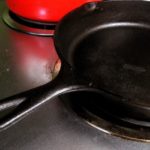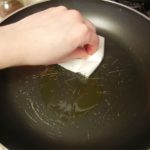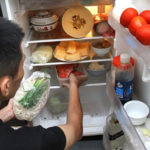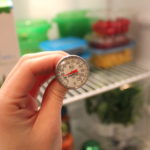Improper Non-stick Pan Cleaning Can Cause Cancer
Many people have the habit of washing hot pans with cold water because it can easily wash away dirt. However, Dr. Nhan Tong Hai – Director of Lam Khau Canh Clinical Toxicology Center (China) still advises people to avoid this habit. The large temperature difference will affect the non-stick coating on the pan’s surface, making it susceptible to damage and increasing the risk of contaminating food.
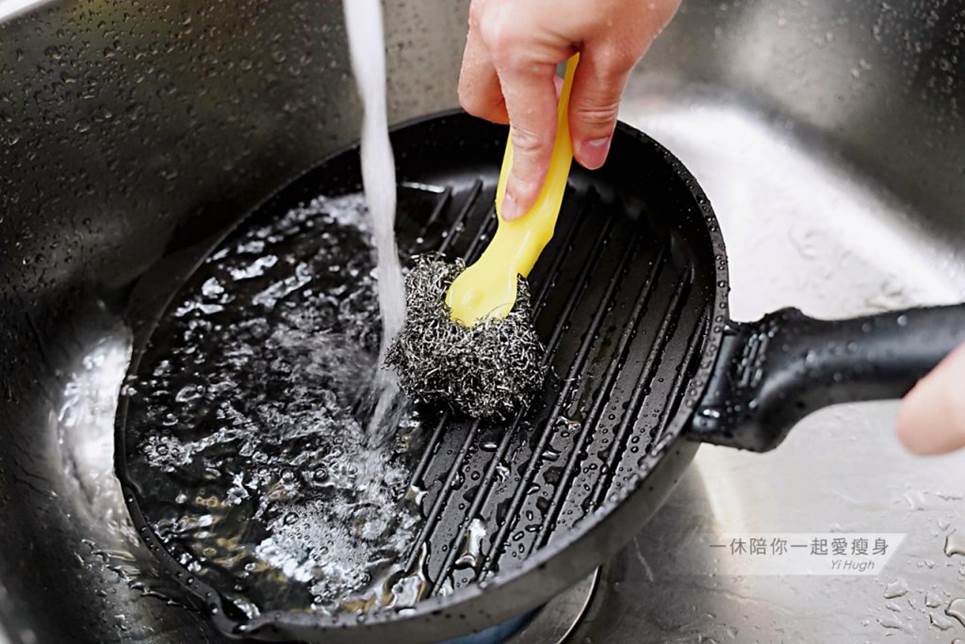
Cleaning the pan in this way can cause dents, cracks, or peeling of the paint film inside the pot or non-stick pan. When the metal beneath the non-stick coating is exposed to the air and oxidizes, it will form perfluorooctanoic acid (PFOA).
This substance can stay in the human body for up to 3 years, not only affecting the endocrine glands but also leading to early menopause in women, increasing bad cholesterol levels in the body, and even affecting the immune system. The US Environmental Protection Agency has also classified PFOA as a possibly carcinogenic substance.
To clean the non-stick pot or pan, use a paper towel to wipe the surface after use to remove grease, then use a sponge to gently clean and air dry it.
How to Use a Non-stick Pan Safely?
1. Choose Carefully
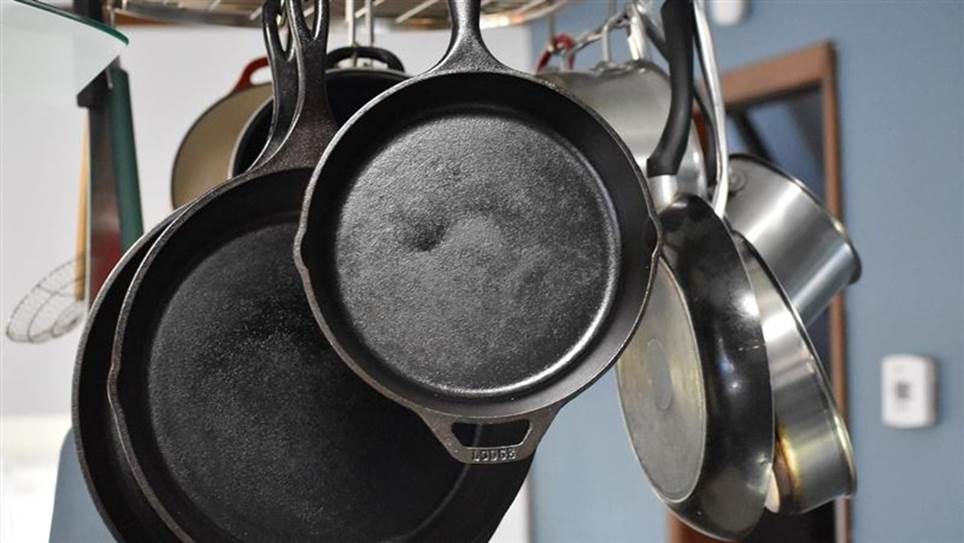
When buying a non-stick pan, look for reputable brands that comply with regulations regarding quality and food safety. At the same time, when choosing a pan, consumers should read the materials and product labels carefully. Confirm the heat resistance of each type of pan to use it for the appropriate purposes.
2. Avoid Leaving the Pan at High Temperatures
Dr. Hoang Nai Van said that the smoke point of cooking oil is typically around 200°C, and meat usually burns at temperatures ranging from 200°C to 230°C. However, if a non-stick pan with no food placed on the stove is left unattended, it can easily exceed a temperature of 260°C and release PFAS.
Therefore, instead of heating the pan first and then adding oil or food to cook, add oil to the pan while it is still cool. Before cooking, turn on the exhaust fan to avoid inhaling harmful substances during the cooking process. Cook at medium to low heat.
3. Avoid Scratching the Surface of the Pan
Do not use metal scrub brushes to clean the non-stick pan as it can easily scratch the surface. At the same time, during cooking, do not use metal utensils. Instead, use wooden utensils to help minimize scratches on the surface.
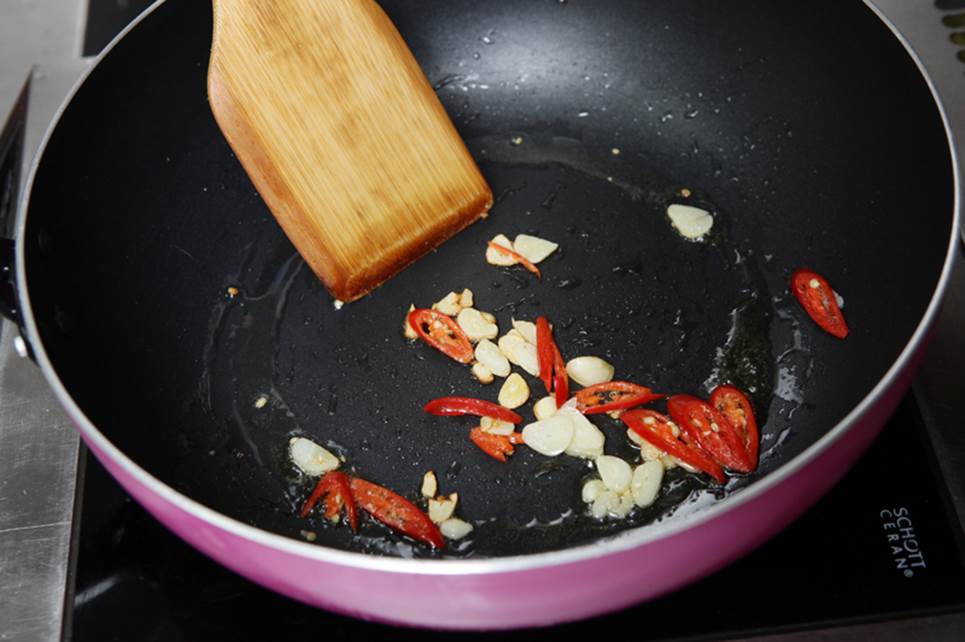
Many people have the habit of striking the bottom of the pan with cooking utensils, which can also cause damage to the surface after prolonged use. Scratches on the non-stick pan can be a place where dirt and hidden harmful substances accumulate.
Dr. Dam Ton Tu also said that when using a non-stick pan, avoid using foods with shells or bones such as clams or crabs. Pre-process the fish before frying to avoid scratching the surface.
4. Pay Attention to Seasonings Added to the Pan
Seasonings with acidic properties such as vinegar, soy sauce, alcohol, etc. can cause the coating to peel and release harmful substances during cooking. Therefore, avoid adding these seasonings directly into the pan while cooking, and instead, put the food on a plate and season it afterward.
Although non-stick pans are believed to be acid and alkali resistant, current research has found that adding vinegar or soy sauce actually increases the rate of dissolution of the non-stick coating. Cream butter and white wine, commonly used in Western cuisine, also make the paint more susceptible to dissolution.
5. Replace When the Surface is Scratched
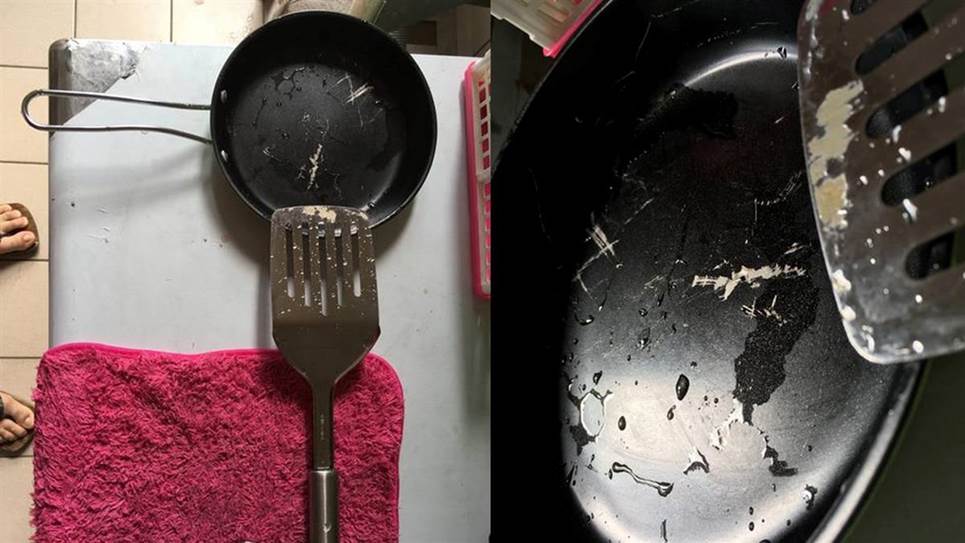
If the non-stick pan starts to stick or the coating is scratched or dented, even with one or two small scratches, it is advisable to replace it immediately to reduce the risk of health hazards. You can detect scratches by pouring water into the pan and boiling it. If you observe bubbles of the same size, it means there are no scratches on the pan’s surface.
Source: edh.tw
According to Tri Thuc Tre

























